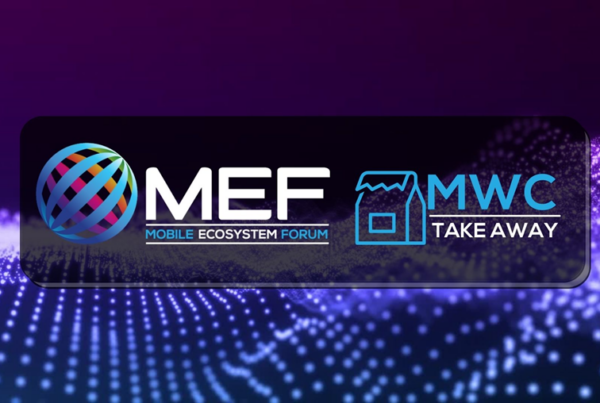Aurimas Paulius Girčys, from MEF Member Eskimi shares his top tips for digital marketers to take advantage of programmatic techniques into real-world marketing strategies.
Programmatic is this trendy topic, that every digital marketing conference tries to cover. But when we step out of conference presentations into the real world, there is a challenge that Programmatic advertising currently faces.
Both agencies and brands understand the value of Programmatic but they have to figure out how to move Programmatic from tactical to the strategic level.

Brands and agencies have a longterm focus on return on investment as a key outcome, but when we talk about milestones, major yardsticks continue to be cost-per-click or click through rate. This approach doesn’t utilize Programmatic at full scale and limits the potential. Marketers should not worry about micro-tactical details such as CTR ups and downs.
They should focus on audience acquisition, client retention and making sure that audience is acquired using media mix that does the job. Right technology solutions can provide marketers this audience. This is what marketers really need: user, 25-42, living in suburbs, having a child and bringing this child to the daycare, planning a trip to United Arab Emirates, ideally with good credit standing.
Choosing a technology with the right set of tools will enable your brands and agencies not in low cost per click, but in relevant audience reach, micro, and macro conversions. Following 5 tips for Marketers will help understand Programmatic better and exploit the potential, that it brings to brands and marketers.
1. Utilize Reach across multiple devices and platforms
Programmatic advertising sometimes is positioned as a marketplace with near limitless inventory. With Eskimi DSP You can reach your clients on all major walled garden solutions and other exchanges. You can target users on smartphones, computers and even feature phones. The only challenge for the marketers is identifying the core audience. When marketers know their audience, marketers can start acquiring it. In old-school advertising, marketers had to check which placements had largest Affinity Indexes for their target audiences.
With Programmatic this is no longer an issue: anyone who gets online can be reached. It doesn’t matter which websites they prefer. If marketers know their audience, agencies with access to high-quality inventory can deliver this audience. The core strategic benefit of reach happens when marketers start understanding which people are unaware of the brand at all, who is considering the brand and comparing it to other customers and which people are satisfied customers.
Programmatic allows marketers to estimate the pool sizes of these user groups and assign DMP IDs to certain awareness/consideration stages by implementing user matching and building a more profound marketing strategy.
2. Use 3rd party data providers to customize ads
The vast reach of programmatic advertising is incredible, but the thing that I love about this technology is an ability to understand the audience and stack layers of data on top of each other. Let’s say marketers want to target the customers that have canceled their services and switched to a competitor. If marketers have a portrait of this audience, marketers can start pulling info about their ex-customer (e.g. Jack) from different 3rd party data providers.
Adding one layer helps marketers understand why the user has canceled the plan (for example they see that the user just got married and switched to a solution which has a family plan). Adding the second layer of data helps marketers understand that their client has expressed deep interest in Kenya and most likely will be having a honeymoon there. The third layer of data helps marketers understand that the user also moved into a new house in a different location and changed work-commute patterns.
 All this information helps marketers customize a message and win back their ex-clients. Instead of just putting a message that they have a -20% off for prices for new clients for first-year, marketers can communicate a deeply targeted message, claiming that their services are perfect for young families, fit great for long-range commuters and provides special deals with service providers in Kenya. This ad would be completely irrelevant for Sasha (another customer, who is a single MBA student, frequently traveling to Dubai) but it is perfect to win back Jack.
All this information helps marketers customize a message and win back their ex-clients. Instead of just putting a message that they have a -20% off for prices for new clients for first-year, marketers can communicate a deeply targeted message, claiming that their services are perfect for young families, fit great for long-range commuters and provides special deals with service providers in Kenya. This ad would be completely irrelevant for Sasha (another customer, who is a single MBA student, frequently traveling to Dubai) but it is perfect to win back Jack.
Such strategic approach of reengaging with the ex-customers would be impossible without all the data, which can be accessed on Jack, Sasha and other former or potential clients from 3rd or 2nd party data providers. The key challenge is understanding which data marketers need and why.
3. Use multiple ad exchanges to reduce cost
With programmatic advertising, marketers can utilize not one or two ad exchanges but the whole range of them. As marketers are not limiting themselves to one or two technical solutions, they can build real Omni-channel marketing campaigns, running on multiple platforms and having global impression capping. From our experience, by targeting the same user across multiple ad exchanges marketers can reduce their cost by up to 40%. This means that with the same budget marketers can reach nearly twice as many people or reach the same amount twice as many times accumulating their brand presence.
4. Creatives should go where your customers are
Programmatic allows us to have segmented and targeted messages for different users. On top of that, marketers can have different creative specs for different phone sizes and make sure that the user sees a message on the device, which fits best. E.g., if somebody sees the ad on a Smart TV, they should have experience that will utilize this device the best. If somebody sees the ad on a smartphone, the ads can be more interactive or engaging (e.g. like scratch-cards, having a frost-like effect or enabling the user to simply open the maps app and visit marketers business location).
The problem with these technical solutions arises when marketers start aiming for awards ignoring market factor. For example, VR currently is very sexy but still deserted technology. Marketers can invest several million Euros into a campaign, which will reach 2000 people in a single market but will deliver them an award for creative breakthrough or they can invest the same amount into traditional Omni-channel digital mix and reach 100x more people, sell their product but will not put them on stage for 2 minutes of fame. Sometimes marketers have to choose if they want to be trendy or profitable.
5. Have a brand safety discussion with your agency
Sometimes less is more. In 2017 marketers started noticing brand safety issues on such major platforms as YouTube. They started questioning agencies if the ads are really shown on relevant placements and whether there will be no brand damage.
Balancing the scale and brand safety might be a challenge because not every agency has a list of 700 whitelisted websites, producing 70% of results. How should the marketers approach this issue? Marketers should be cautious about brand safety and definitely request their partner agencies to provide info where the ads are shown. Marketers are likely to lose some reach and frequency, but they will not suffer brand damage.
When marketers incorporate their own data into real-time bidding and real-time decision making, the environment changes dramatically. Such marketers become truly data-driven marketers. With such shifted mindset marketers start focusing on efficiency and performance of what is purchased instead of pure viewability.
Next stage for data-driven marketers in filling their bidding strategies with proprietary data and creating campaign strategies, which cannot be replicated by competitors. Marketers, which chose to become data-driven marketers will be able to measure cost per viewable conversion and still measure the safety of the brand.
Want to be featured on the MEF Minute?
The MEF Minute is an award winning blog that provides a cross-ecosystem and international perspectives on all things mobile. With contributions from MEF’s members and other industry experts it is a dedicated global news resource and thought leadership platform.
We welcome contributions from members and non-members across a range of formats including opinion pieces, industry views, stats, videos and infographics. MEF Minute offers a 360 look at any given topic impacting the mobile ecosystem whether that be from a MNO, enterprise, developer or provider perspective.







I’m a fan of https://mobileecosystemforum.com. I just wanted to reach out because I’ve really been enjoying your writing. In fact, I learned great advertising tips from reading your blog post: https://mobileecosystemforum.com/2018/01/17/top-5-programmatic-advertising-tips-marketers/. I know you’re busy, so I won’t waste your time. I’m reaching out because I had some ideas I think the MEF audience would love, and I was wondering if you’d be open to a guest blog post?
Thanks for your time and consideration! I can’t wait to hear back from you.